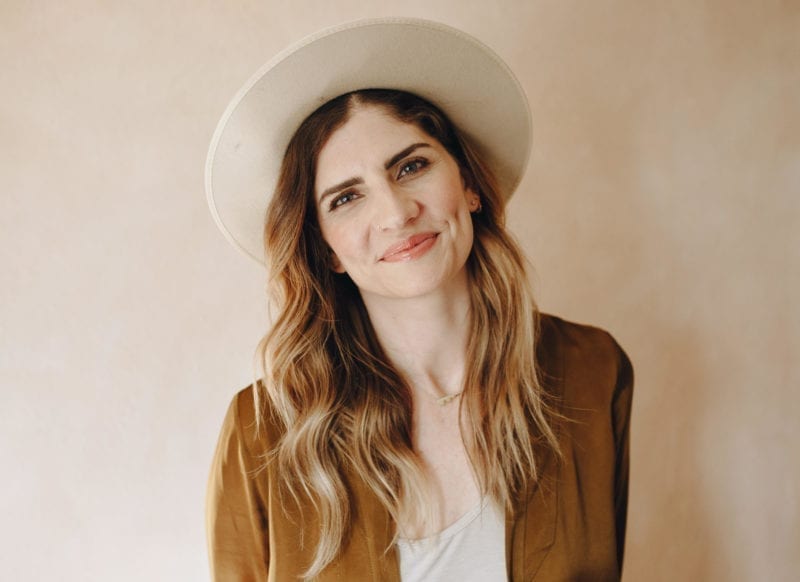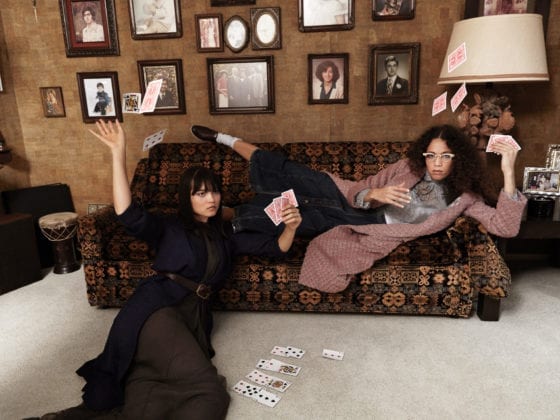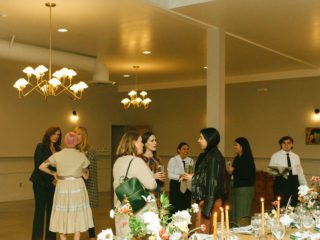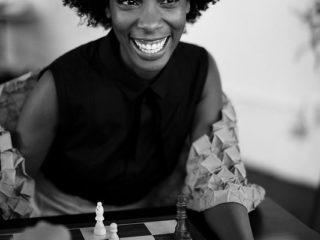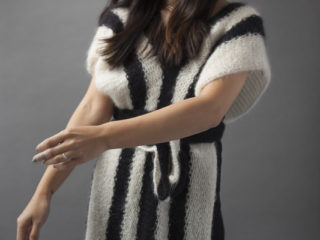For most people, the 20s is a decade of adventure and exploration, but for Ruthie Lindsey, a large portion of her young adult years were spent bedridden. At the age of 17, in her senior year of high school in rural Louisiana, a tragic accident would forever change her story. Lindsey was hit by an ambulance going about 65 mph, leaving her with a broken neck and three broken ribs, collapsed lungs and a ruptured spleen.
The doctors were able to perform a spinal cord fusion with wire that would save her life. Miraculously, Lindsey walked out of the hospital within a month, but it wouldn’t be until about seven years later, after a slight turn of the head (unbeknownst to her and doctors) that a wire from her previous spinal cord fusion would break and pierce her brain stem, leaving her with crippling chronic pain throughout her body.
Lindsey was placed on medication to try to help with the debilitating pain, and she soon became dependent and severely depressed. After countless doctor visits, one doctor discovered that the wire holding together her neck was piercing her brain stem. Another surgery was necessary to prevent her from being completely paralyzed.
In the midst of all of this, her father suddenly passed away after a freak accident, her marriage fell apart and she was faced with mounting debt. After the surgery, although Lindsey’s spine was fixed, she was still in so much pain and her spirit was very much still broken. She retreated back to her life in bed and accepted that this pain might just last forever. After hitting rock bottom, Lindsey decided to change everything—moving home and slowly weaning herself off narcotics. Finally, she started to feel hope again.
Today, Lindsey is a renowned speaker, author and host of the podcast Unspoken (alongside co-host Miles Adcox). She recently released her memoir, There I Am: The Journey from Hopelessness to Healing about learning to find joy again and discovering the beauty in brokenness. Here’s what Lindsey had to say about her new book and about her journey of changing the narrative of pain.
Tell me about Ruthie before the accident. How was she different?
Pre-accident Ruthie was very different. I was a carefree kid whd hadn’t been faced with much hardship in my life. I assumed everyone’s life was good like mine. I was quite naive and didn’t have very much empathy for others because I had not yet experienced suffering.
How would you say that the car accident changed the trajectory of your life?
At the time of the accident, I had no idea just how much that day would change my life. The first spinal cord fusion surgery went well, I healed and life went on. I didn’t have much pain until about seven years after the wreck when the wire from the previous procedure broke and pierced my brain stem. That’s when everything changed. I lived in my bed for many years and lost myself completely.
How would you explain chronic pain to someone who hasn’t experienced it?
Chronic pain is just like anything else. You can’t know it until you experience it. I couldn’t know what it was like to go through a divorce until I went through one. I didn’t know how it felt to lose a beloved parent until I experienced it myself. Yet, the nature of chronic means, constant. It’s ongoing. When I was in the midst of my suffering with my pain, it was really hard to think about anything else, ever. Pain was the singular focus of my existence.
Pain was the singular focus of my existence.
Tell me about the time in your life when you were living with debilitating pain and bedridden.
Well, it took my doctors a good while to realize that my pain was caused by the broken wire in my brain stem. During that time, I was on heavy narcotics and spending all of my time in bed watching TV and eating my feelings.
I stopped showing up for life. I was unable to function. I was unable to show up for my partner, friends and family. I stopped working.
I basically stopped doing anything that I thought would make my pain worse—and everything felt like it made my pain worse. So I did nothing. It was such a hopeless and dark time. At that time, the life I had dreamed of felt far away. I was consumed by a victim mentality.
The life I had dreamed of felt far away. I was consumed by a victim mentality.
What motivated you to get off all the pain medications you were on?
I had a complete nervous breakdown seven years ago when my marriage ended. I had a surgery to remove the wire from my brain stem, which resulted in severe nerve damage. The entire right side of my body was on fire, at all times. I went straight back to my bed after that surgery and was on even more pain meds than before.
I’ve never felt more hopeless because the one thing I thought could help (the surgery) only caused more pain. At that point, I had already lived in my bed for seven years. I moved back to my mom’s house because I was unable to function or take care of myself. I stopped sleeping and felt so much shame. I could not imagine continuing to live that way. I wanted to die. Death sounded like a respite.
My family wanted to send me away to get help. That scared me so badly because I cared so deeply about what others thought of me. The next day, I started weaning myself off the drugs. A ridiculous motivation, but I’m still grateful because the fear and shame jumpstarted the best decision of my life.
Why did you decide to write a book about your life story?
Honestly, I didn’t want to. I said no to opportunities for years. Then, a kismet moment was handed to me, and it felt right. I met the head of William Morris Endeavor’s literary department at a Glennon Doyle event and told her my story. She was intrigued and set up a meeting with Glennon’s agent, Margaret Riley King. I couldn’t say no to her.
Months later, I met author Ann Patchett at the Women’s March. She became my mentor. I was provided-for in ways I never could have dreamed.
Do you have a favorite excerpt/passage from the book that you can share with us?
There’s a passage on page 212 that says, “Just because you know a story by heart doesn’t mean it’s true.”
I love that so much because it’s so easy to believe so many limiting stories we have been told by culture, the church and family that we take on as fact and believe so fully. We get this really beautiful opportunity to unlearn those stories and come home to the truth of our inherent worth and value. Just because we were born, we are worthy, whole, needed, good and deserving.
Just because we were born, we are worthy, whole, needed, good and deserving.
What does your life look like now and how have you turned pain into purpose?
My life is beautiful, painful and everything in between. When I stopped numbing my pain with medicine, I started to fully live—to feel it all: the good, the bad and the ugly. I think that’s the only way to live a wholehearted life.
I’m publishing a book during a global pandemic and national quarantine. My days are full and busy, hard and exciting. It’s strange how things work out. I get to share my personal journey of a life turned completely upside down and how I found hope, healing and joy through the unexpected pain. All this during a time when the entire world is experiencing hardship. Maybe the message of hope is more applicable now more than ever.
Maybe the message of hope is more applicable now more than ever.
What do you hope that readers take from this book and your story?
My deep desire is that readers finish the book and that they forget all about me and my story in order to reflect on their own. I hope my story helps readers unlearn the stories of brokenness that we are told (and tell ourselves) to embrace the wholeness, joy and healing that lives inside all of us. I hope they feel loved, optimistic and seen.
Be sure to check out Lindsey’s memoir: There I Am: The Journey from Hopelessness to Healing-A Memoir Also, follow her journey on Instagram.
Image via Ruthie Lindsey

